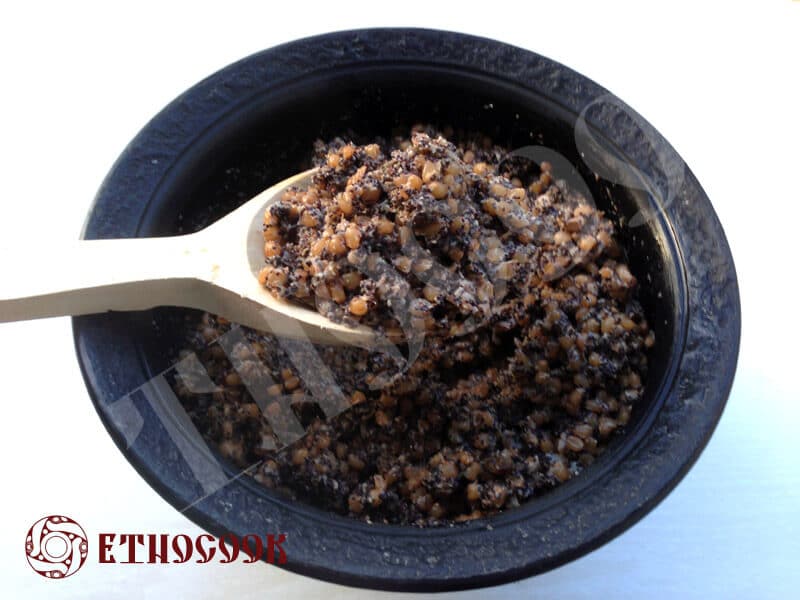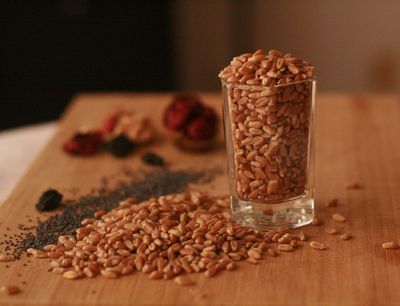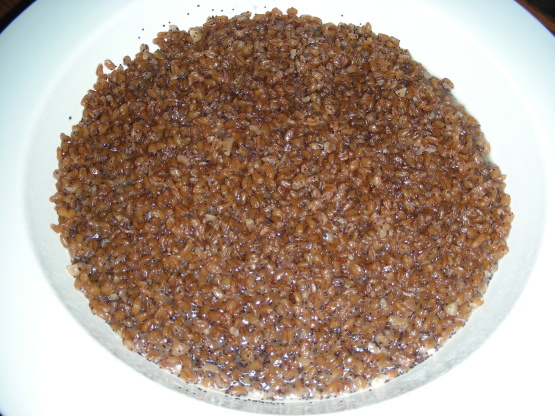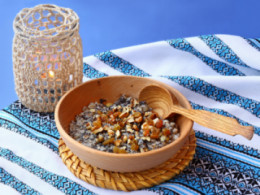Kutia
sochivo, kutya
Kutia or kutya is a ceremonial grain dish with sweet gravy traditionally served mostly by Eastern Orthodox Christians and some Catholic Christians predominantly in Belarus, Russia, Ukraine, but also in parts of Lithuania and Poland during the Christmas – Feast of Jordan holiday season or as part of a funeral feast. The word with a descriptor is also used to describe the eves of Christmas, New Year, and Feast of Jordan days. The word kutia is a borrowing from the Greek language κουκκί (bean) or κόκκος (grain). In Ukraine kutіa is one of the two essential ritual dishes at the Ukrainian Christmas Eve supper (also known as Svyata vecherya). The ritual significance of kutia, as well as uzvar, is quite ancient. Ukrainian ethnographer Fedir Vovk traces the origins of these dishes to the Neolithic era. Before dinner, the kutia is placed in the icon corner ("kut") , the most honorable place in the house where religious icons or images are placed. The pot with the kutia was to stand there in a designated spot from Rizdvo (Christmas on December 25) to January 1, New Year's Day (formerly January 6 to the Old New Year in January 14). There is also a custom of sending children with kutia to relatives, usually grandparents and godparents. After dinner, the kutia is left on the table for the whole night with spoons for the dead ancestors, "so that our relatives would have dinner and not be angry with us." The religious nature of the dish is emphasized by an ancient custom, when the head of the family approached the window or went out into the yard with a spoonful of kutia and, addressing the frost, invited him three times to take part in dinner with the family. When the frost does not appear, he is advised not to appear, not to do harm to crops, etc.: "Frost, frost, come to us to eat kutia, and if you don't come, don't come for the rye, wheat and other crops."
Source: Wikipedia
Recipes

Kutia - Authentic Recipe from Belarus | 196 flavors




:max_bytes(150000):strip_icc()/polish-christmas-cooked-wheat-pudding-recipe-1136955-hero-01-28a93791cff5485b9d4c8b36d19db396.jpg)







